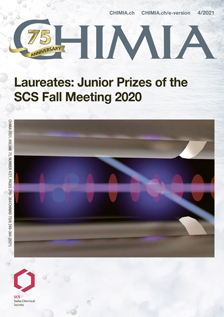Efficient Semiclassical Dynamics for Vibronic Spectroscopy beyond Harmonic, Condon, and Zero-Temperature Approximations
DOI:
https://doi.org/10.2533/chimia.2021.261PMID:
33902792Keywords:
Absorption spectroscopy, Anharmonicity, Computational chemistry, First-principles calculations, Time correlation functionAbstract
Understanding light-induced processes in biological and human-made molecular systems is one of the main goals of physical chemistry. It has been known for years that the photoinduced dynamics of atomic nuclei can be studied by looking at the vibrational substructure of electronic absorption and emission spectra. However, theoretical simulation is needed to understand how dynamics translates into the spectral features. Here, we review several recent developments in the computation of vibrationally resolved electronic spectra (sometimes simply called 'vibronic' spectra). We present a theoretical approach for computing such spectra beyond the commonly used zero-temperature, Condon, and harmonic approximations. More specifically, we show how the on-the-fly ab initio thawed Gaussian approximation, which partially includes anharmonicity effects, can be combined with the thermo-field dynamics to treat non-zero temperature and with the Herzberg-Teller correction to include non-Condon effects. The combined method, which can treat all three effects, is applied to compute the S1 ? S0 and S2 ? S0 absorption spectra of azulene.Downloads
Published
2021-04-28
Issue
Section
Scientific Articles
License
Copyright (c) 2021 Tomislav Begušić, Jirí Vaníček

This work is licensed under a Creative Commons Attribution 4.0 International License.
How to Cite
[1]
T. Begušić, J. Vaníček, Chimia 2021, 75, 261, DOI: 10.2533/chimia.2021.261.







